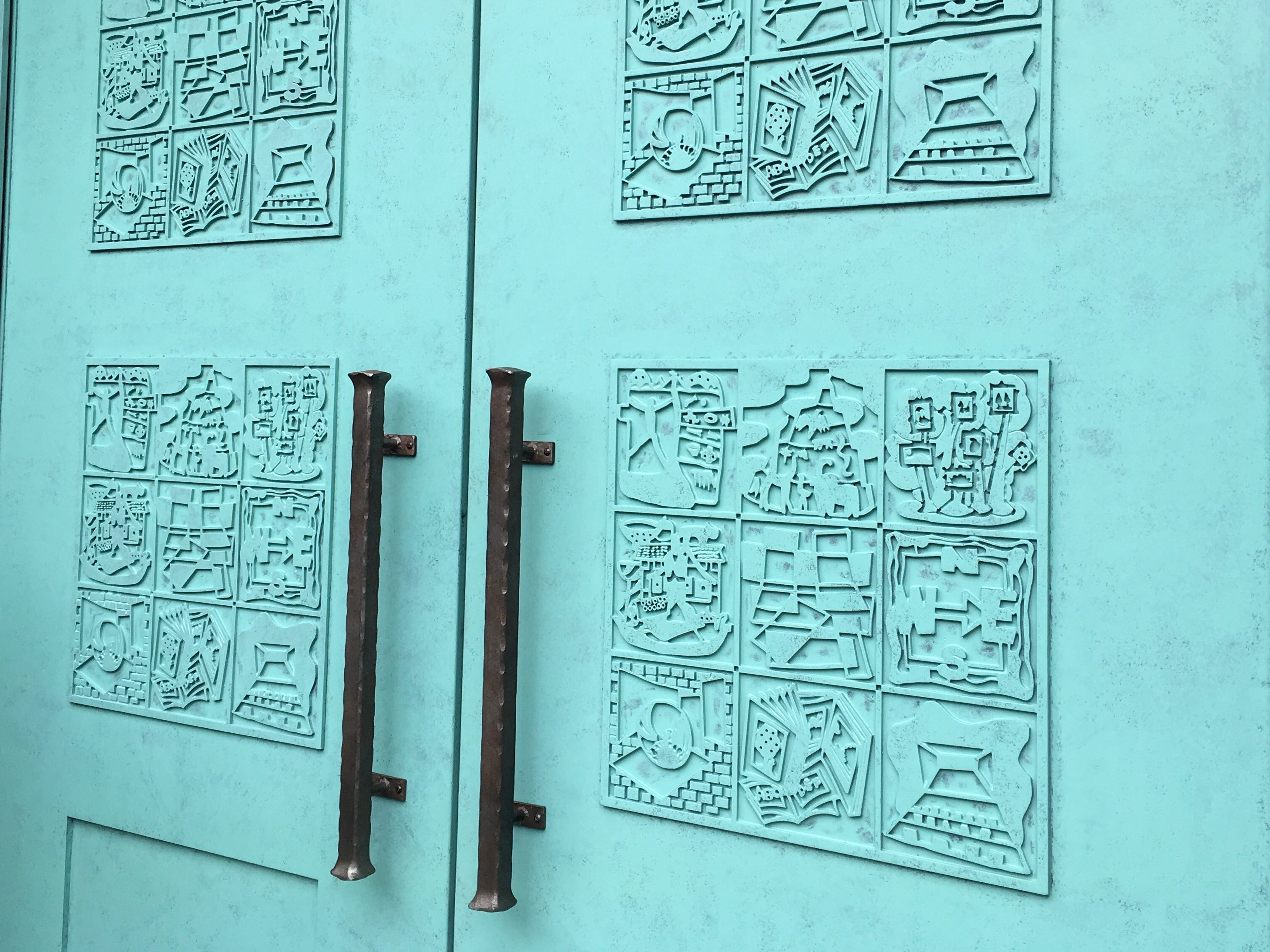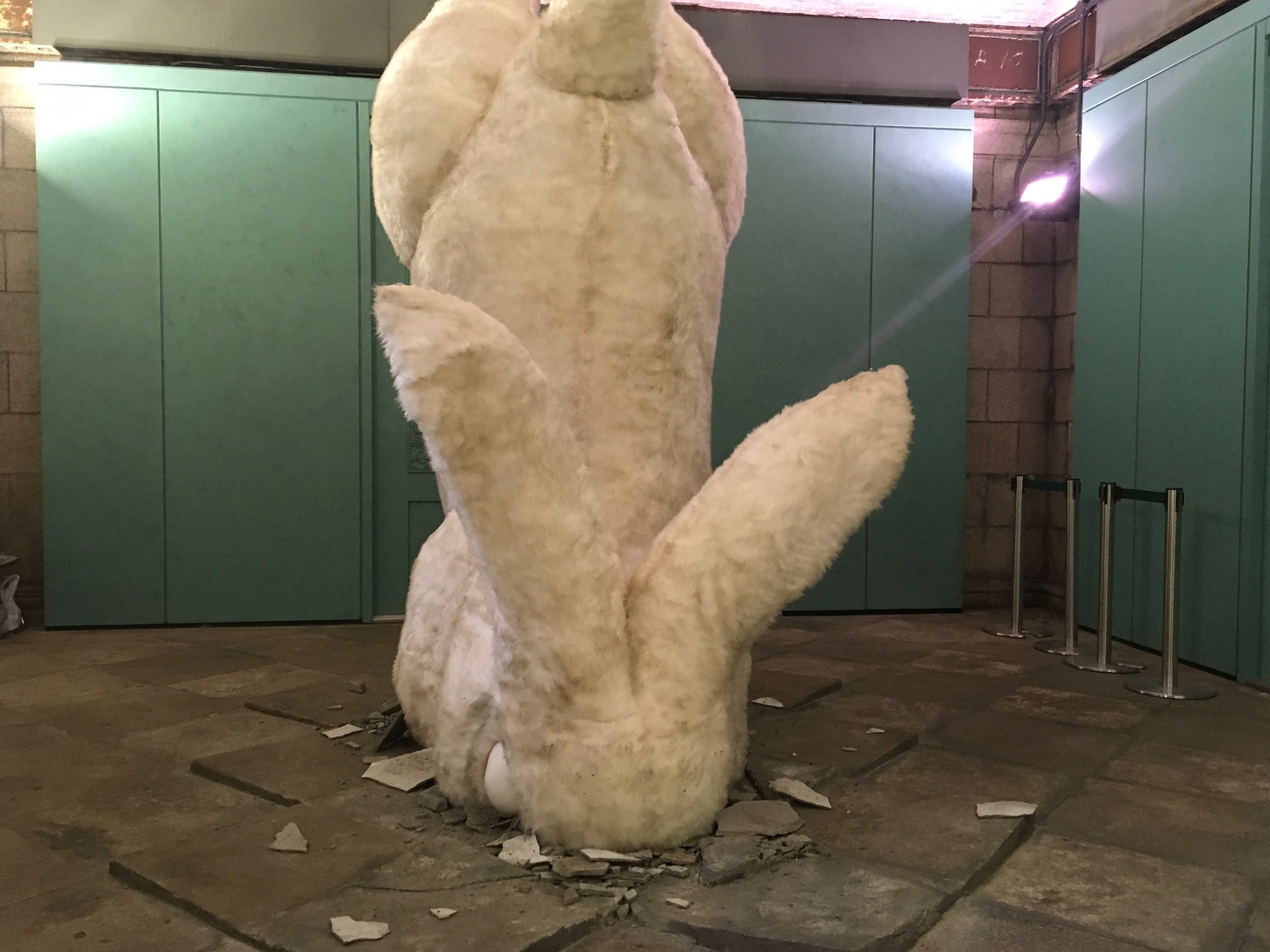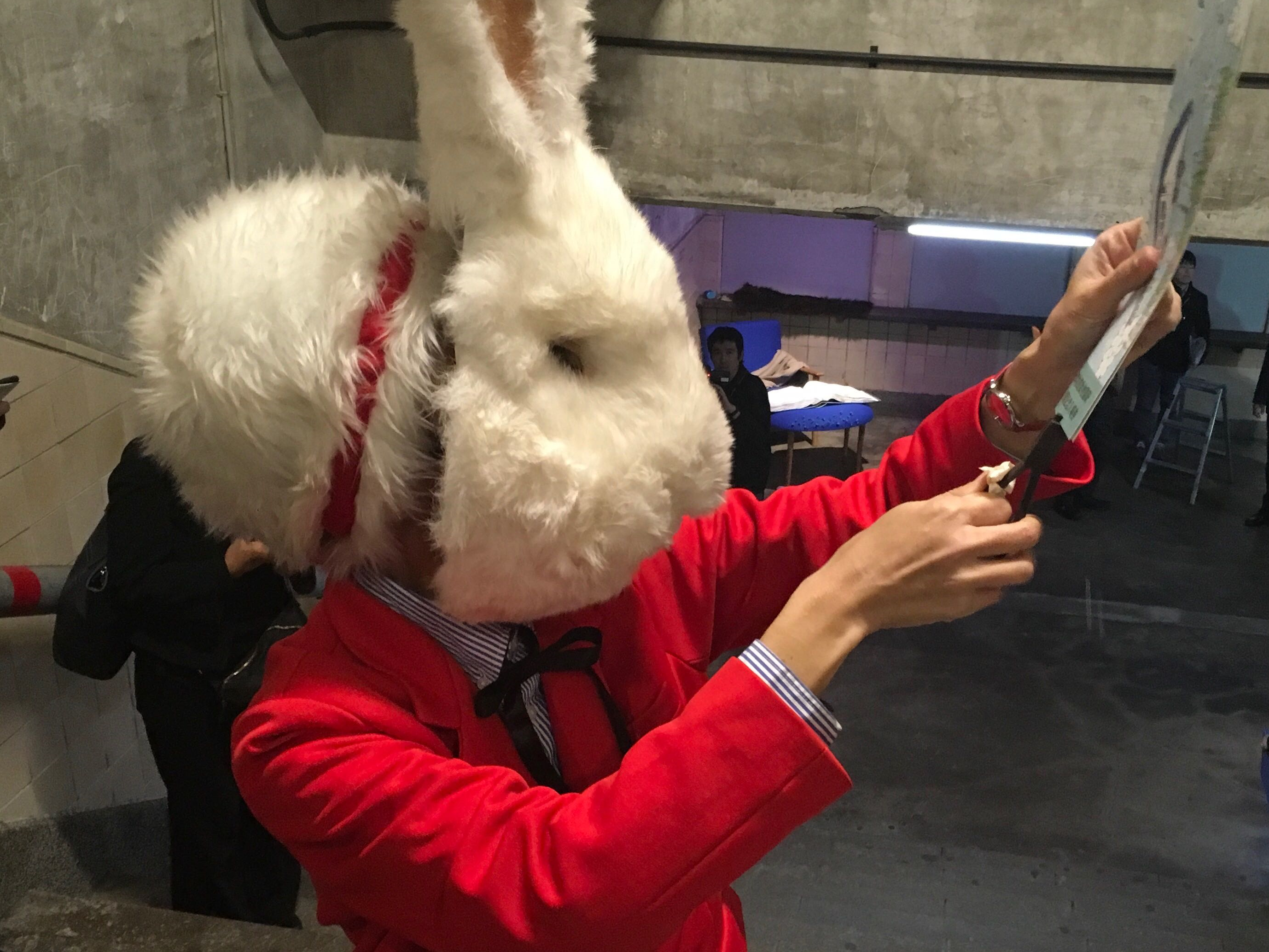Ichiyo Memorial Museum at Taito Ward
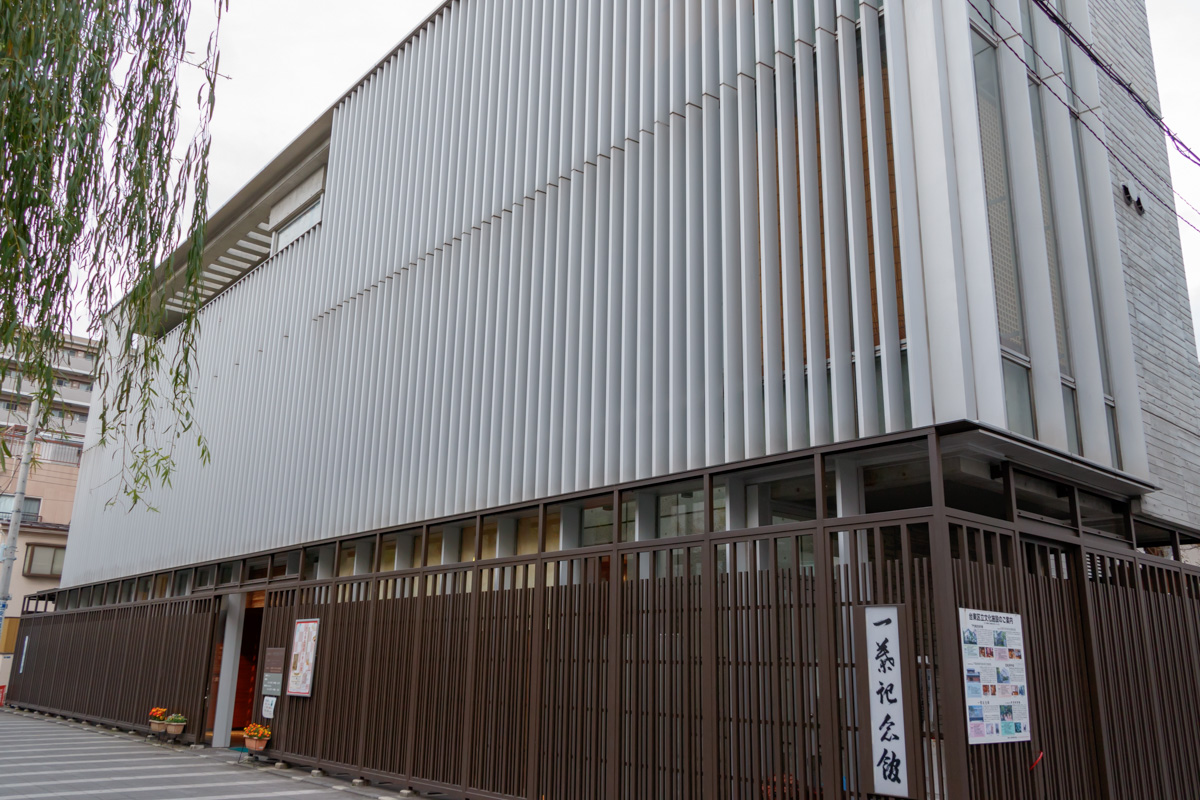
Ichiyo Memorial Museum at Taito Ward is located in a place where female writers, Ichiyo Higuchi in the Meiji era once opened roughs and sweets shops.
Ichiyo is said to have obtained the idea of masterpiece "Takekurabe" in about 10 months spent in this place.
Ichiyo moved to Shimotani Ryusenji Town 125 years ago.
In commemoration of this, at the Ichiyo Memorial Museum, during the period from Saturday, November 10, 2018 to January 27 (Sunday) 2019, the Moved to Shimotani Ryusenji Town 125 year anniversary special exhibition "Shimotani Ryusenji Town Higuchi Ichiyo " is held.
The exhibition room is divided into two, the first exhibition room introduces the life of Ichiyo before coming to Shimotani Ryusenji Town, and the life in this place.
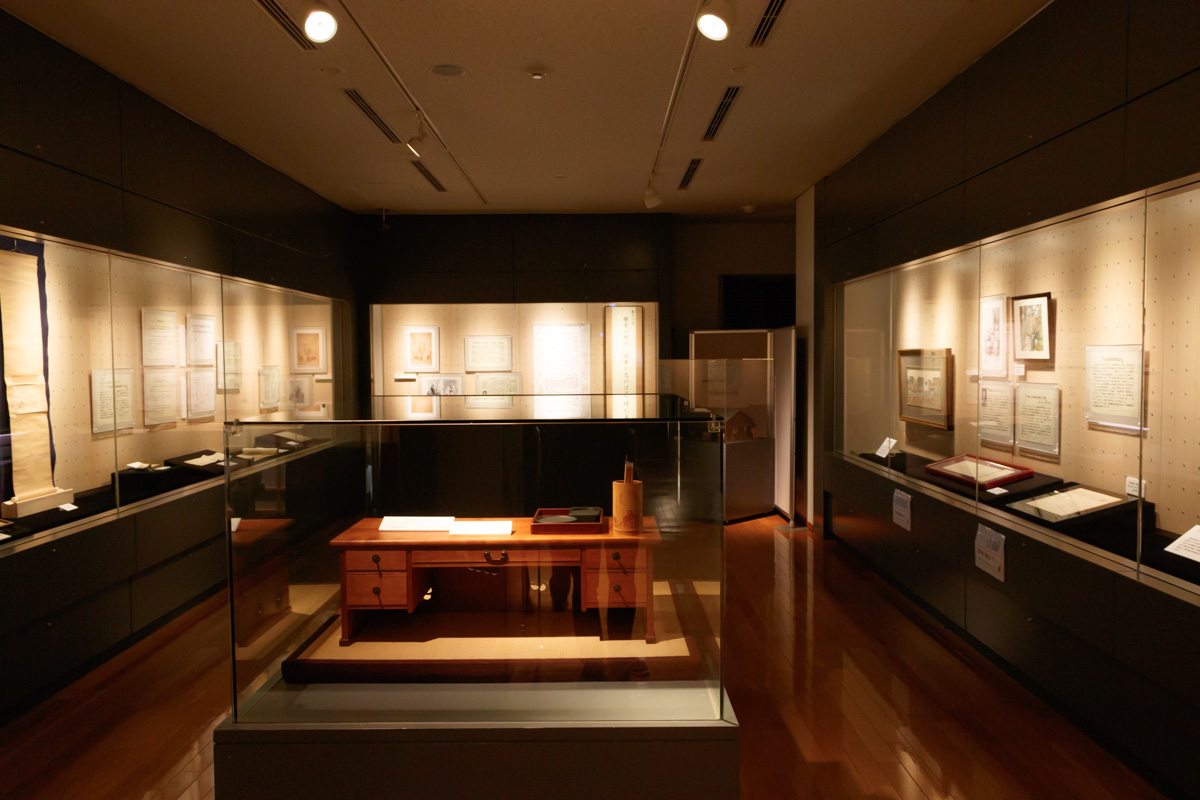
Shimotani Ryusenji Town
Ichiyo who lost his father at the age of 17 was responsible for the lives of her mother and sister as the main pillar of the family.
Although she was publishing a novel and getting drafts, her life was so hard to go on and moved to Shimotani Ryusenji Town to start a new business.
The fact that the borrowing letters and letters of exhibits were telling us that Ichiyo’s life at that time was strict. Also, as there are few pictures of the Shimotani Ryusenji Town at that time, you can see this area’s situation in paintings.

Children live in a neighbourhood and people who work in the Yoshiwara area came to the Ichiyo’s shop. Ichiyo observed people through such exchanges and later, The theme of her novel;Scoop up the little voices of people who live in one corner of societywas formed.

Ichiyo’s masterpiece “Takekurabe” is a boy and girl’s pale love of the downtown, which is set in the vicinity of Shimotani Ryusenji Town, and Sensoku Inari Shrine and Ootori Shrine appeared in the work.
Between the reality and the ambition

Ichiyo became good friends with a woman named Nonomiya Hisako when she lived in Shimotani Ryusenji Town. Autographed letters addressed to Ms. Nonomiya from Ichiyo are on display.
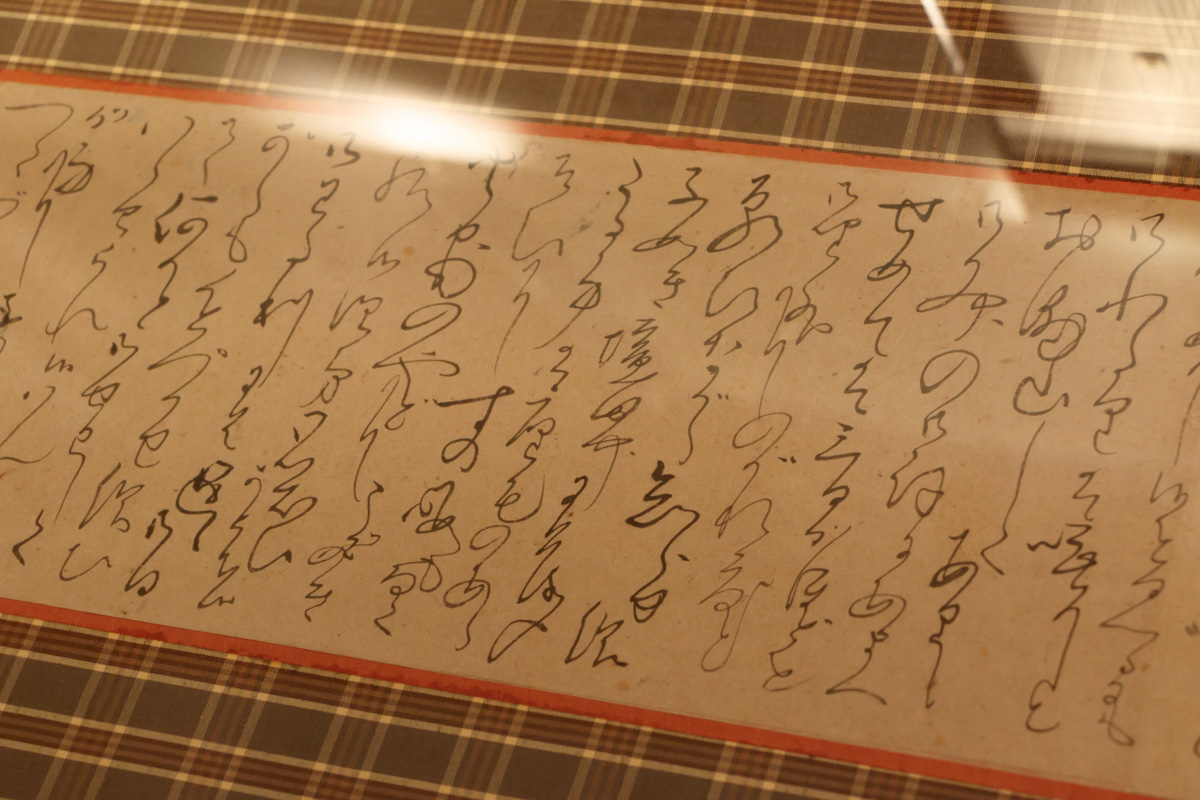
Before she came to this place, she learned Japanese poetry and classical literature at a school named "Hagi no sha", where she also learned the essence of the litgraghy.
A replica of the desk which Ichiyo used until died is also exhibited. It is a gorgeous one with ivory settled, it seems to have been bought from her father.
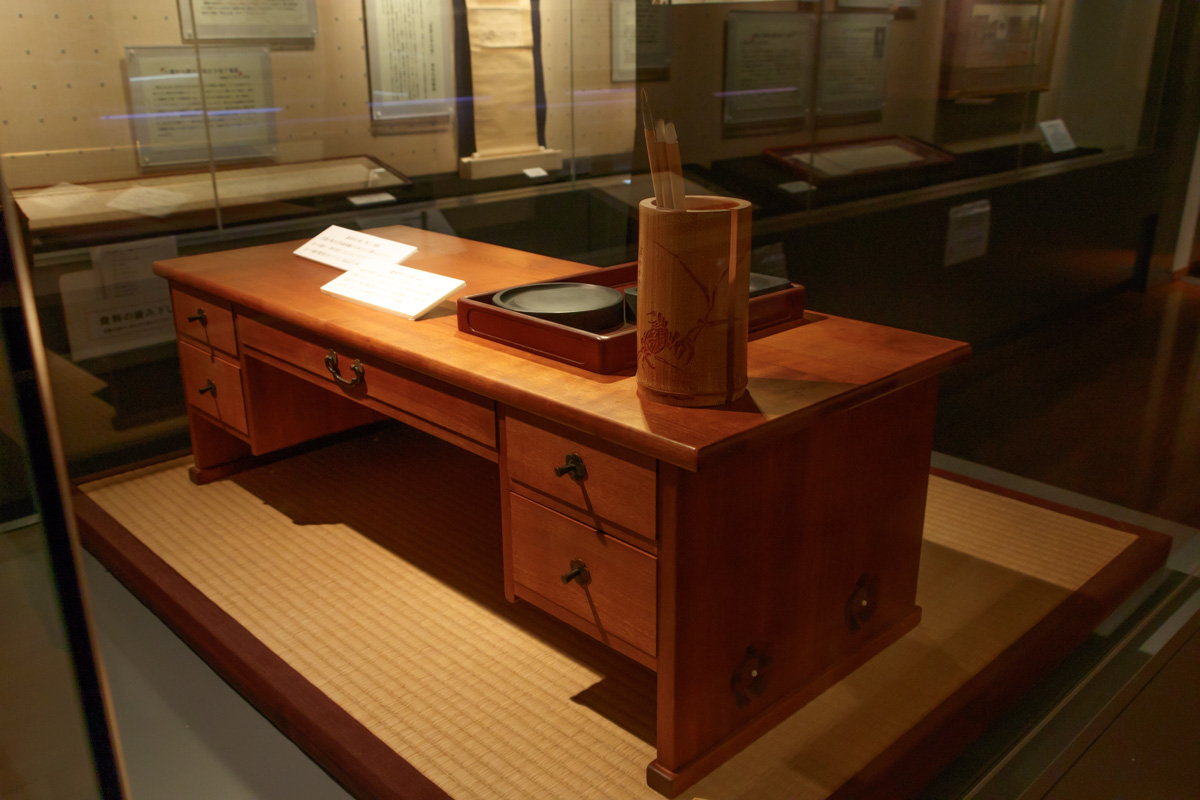
She spend wealthy life in her childhood. The real thing of the desk is kept in the Modern Japanese Literature Museum in Meguro-ku.
In the 2nd exhibition room, from 7 factors we could understand how Ichiyo’s life in Shimotani Ryuzenji Town affected "Takekurabe".
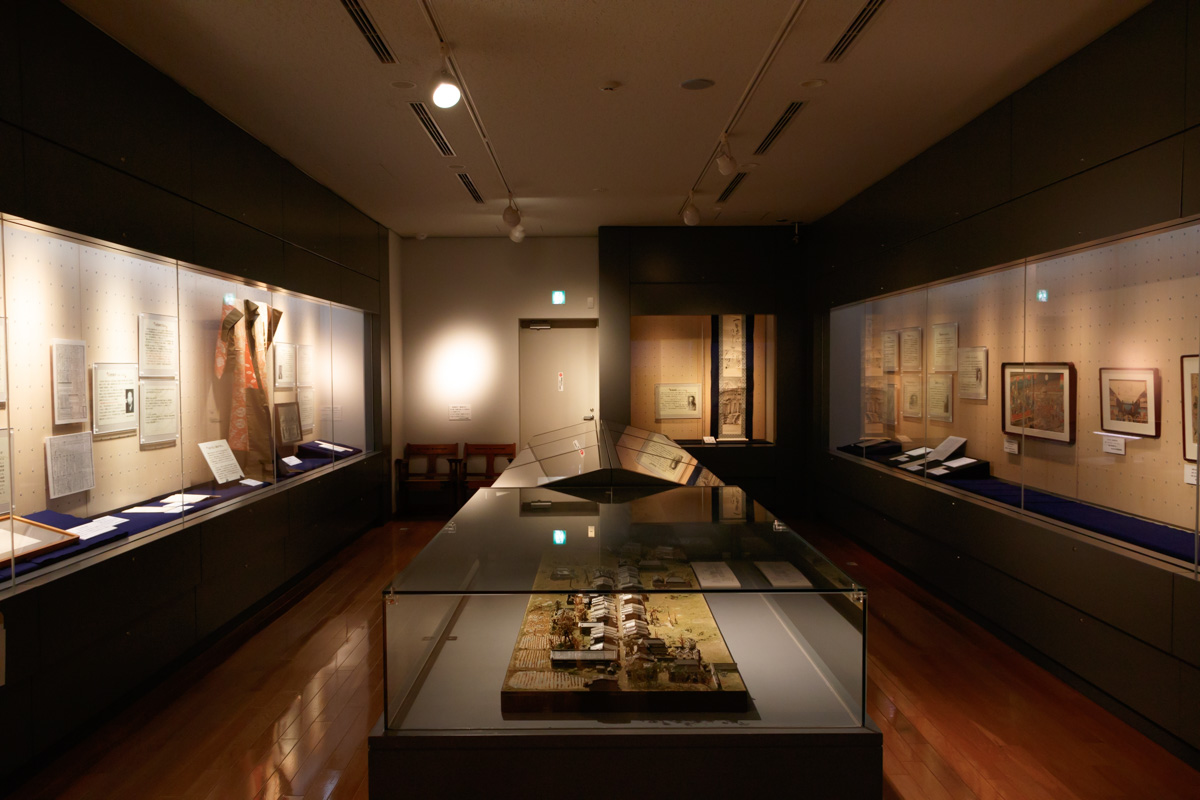
At first, Ichiyo wanted to be a japanese poetly’s teacher, not to be a novelist.
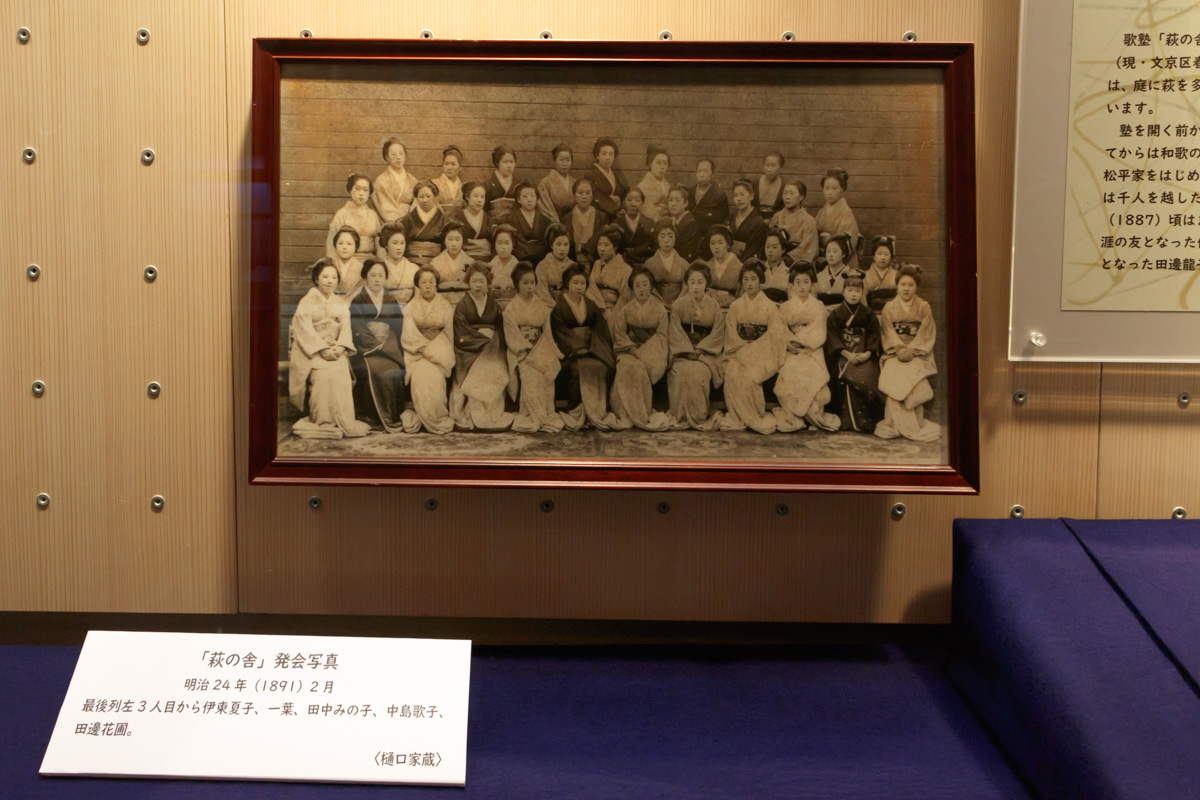
A lot of young ladies of the famous family passed through "Hagi no sha" where Ichiyo learned japanese poetly. Among them, it is thought that there was also a hard time for Ichiyo who had no title. One time she wore a cloth full of paches and visited "Hagi no sha".
A replica of the kimono is on exhibition. Ichiyo’sister, Kuni and this kimono with great difficulty so that it would not be able to see the patch if she wore a coat on it.

After living for about 10 months at Shimotani Ryusenji Town, Ichiba moved to to Hongou maruyama fukuyama Town.
And there, during 14 months untill she died, she wrote many works including "Takekurabe". This period is called "14 months of miracle".
Ichiyo came to Shimotani Ryusenji Town for business, but she gained inspiration that would be a source of later writing life from interaction with people she met here.
It would be clear how the life in here stimulated the creativity of Ichiyo by this special exhibition.
In the permanent exhibition, works after Ichiyo passed away were mainly introduced.
While Ichiyo alive, her works were published in a magazine, and no books such as novels were not sold.
This is the last book of Ichiyo and the only book published while she alive "Encyclopedia of Daily Usage 12th Edition Common Letters". An example sentence of a letter by Ichiyo.
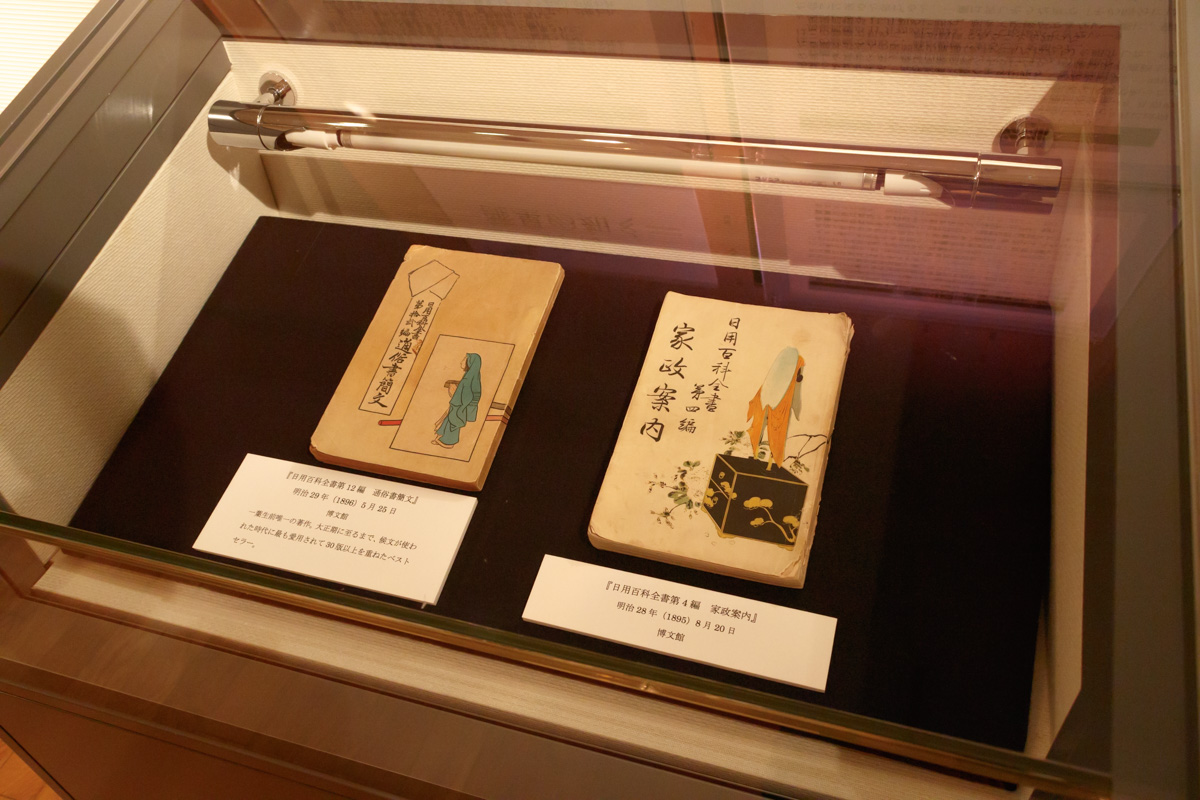
Ichiyo’s younger sister Kuni was keen to preserve her work after the death of Ichiyo. Even she was evacuated with Ichoyo’s manuscripts under wartime.
It is largely owed to Kuni that we can now see Ichiyo’s manuscript etc in this way.
Kuni has contributed essays to the magazine "Women's World" as "a side of my older sister who did not have a wage."
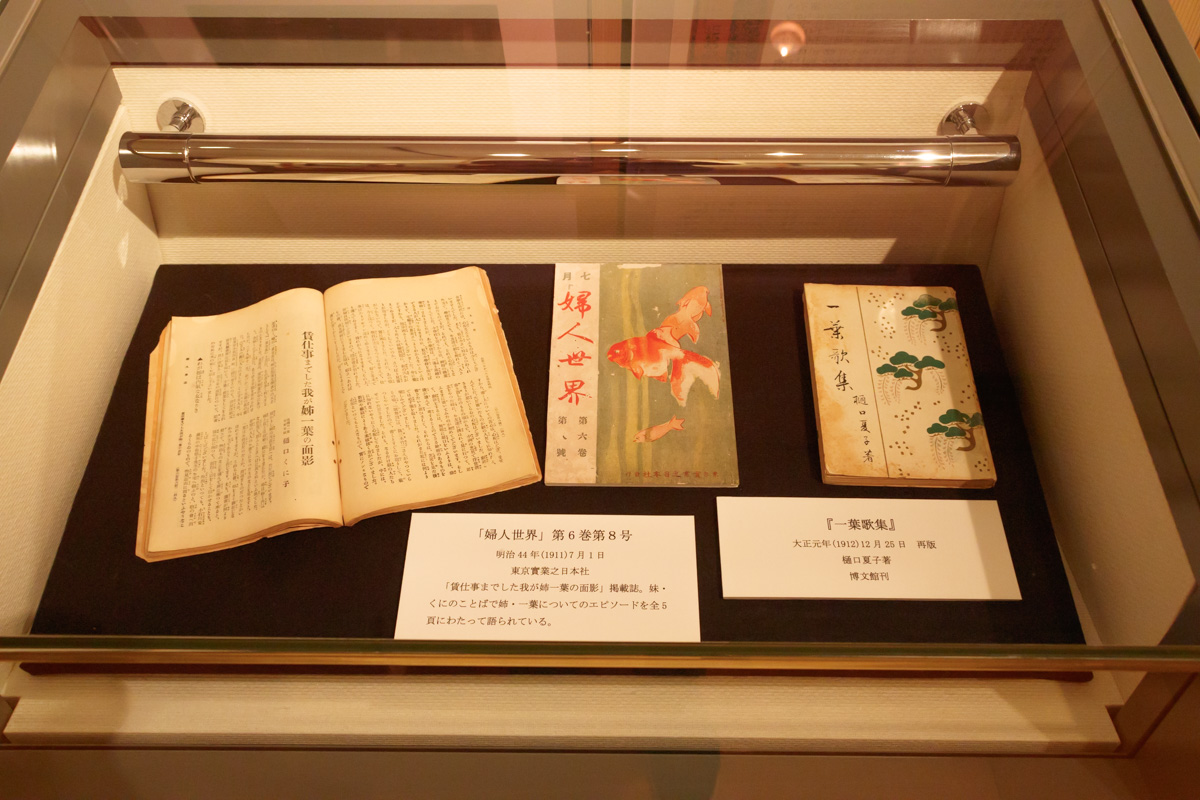
It is very valuable material today to convey the figure of real Ichiyo seen from the close relatives.
"Nigorie" of the original one which was put into a stage by Mr. Yukio Ninagawa in 1984. A stage model handed down by Setsu Asakura herself who was in charge of the stage arts is displayed.
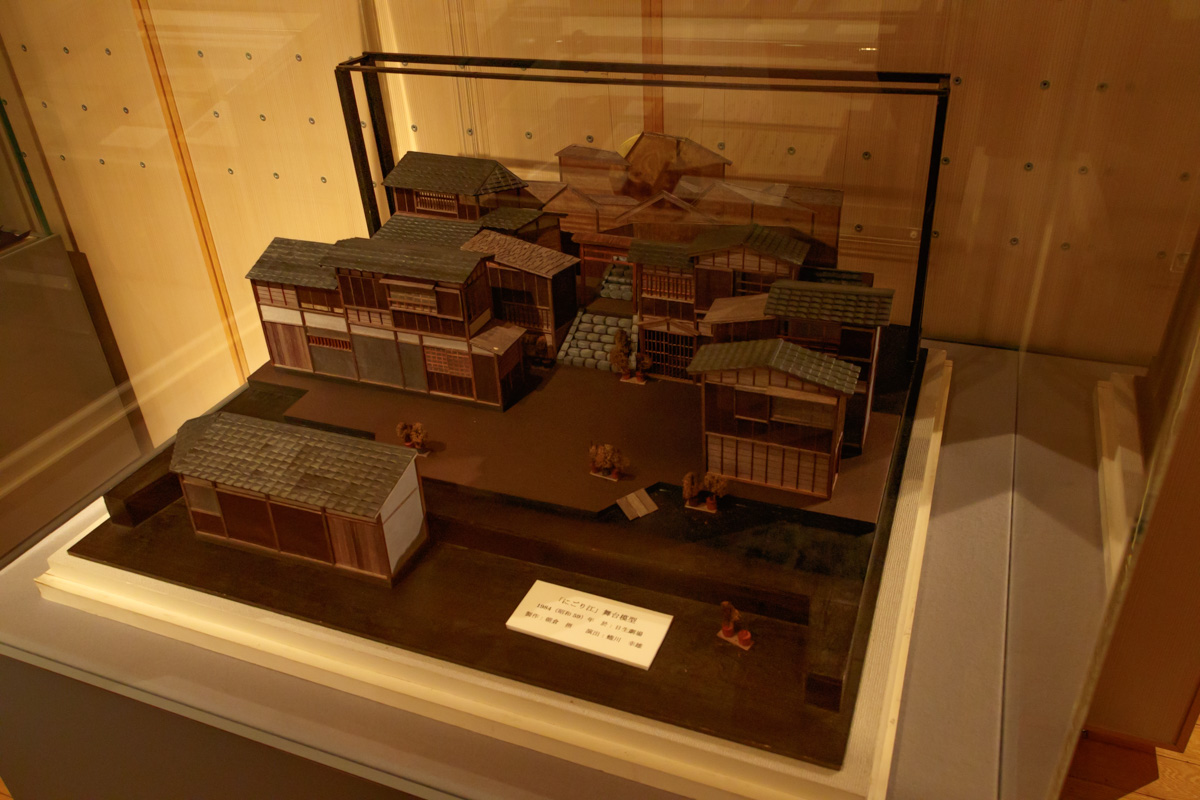
In the special exhibition, life in Shimotani Ryusenji Town, the foundation of creation of Ichiyo "Takekurabe", has been comprehensively introduced, so I thought that after viewing I could understand the work even more.

Shimotani Ryusenji Town The 125th anniversary commemorative special exhibition "Shimotani Ryusenji Town (town of the stature) Higuchi Ichiyo" is held until January 27, 2019. When you come to the memorial hall, why not try walking around and thinking about the world of "Takekurabe"?
Outline of the exhibition
| Exhibition name | Moved to Shimotani Ryusenji Town 125 year anniversary special exhibition "Shimotani Ryusenji Town Higuchi Ichiyo " |
| Term | November 10, 2018 (Sat) to January 27 (Sunday) 2019 |
| Venue | Taito Ward Monobye Memorial Hall (3-18-4, Longquan, Taito-ku) 1st and 2nd exhibition room |
| Opening hours | 9: 00 ~ 16: 30 (Admission is until 16:00) |
| closing day | Every Monday (when overlapping holidays, next weekday), New Year's holidays 12 / 29-1 / 3 |
| Admission fee | Individual / adult 300 yen, elementary and junior high / high school student 100 yen Group / adult 200 yen, elementary and junior high / high school student 50 yen * Groups of 20 or more ※ If you have a handicapped Person with Disabilities and Certificate of Medical Entitlement for Specific Disease, those who help you and those who assist you are free. ※ Entry fee for elementary and junior high school students and their guardians who live and stay in Taito Ward every Saturday is free. |
TEL | 03-3873-0004 |
| Official website | http://www.taitocity.net/zaidan/ichiyo/ |





